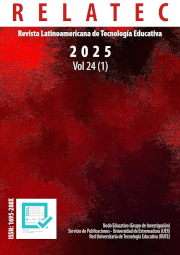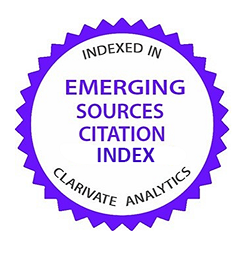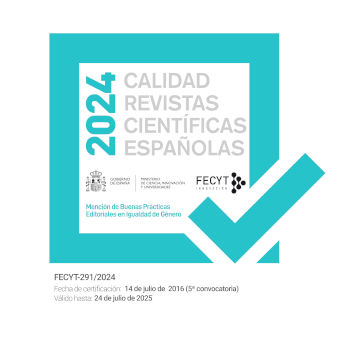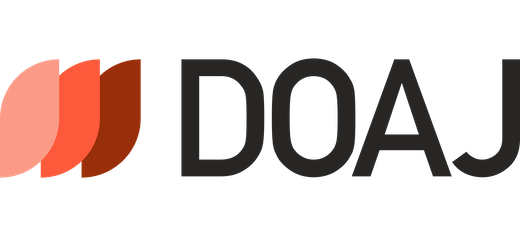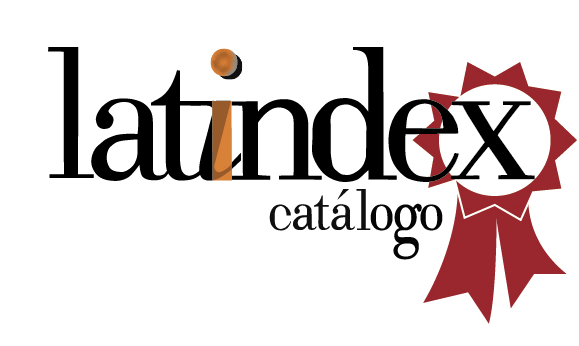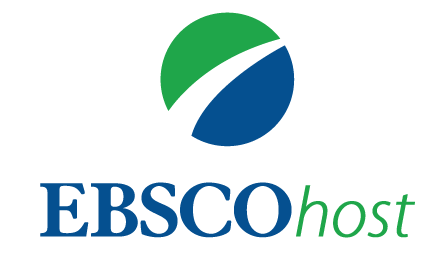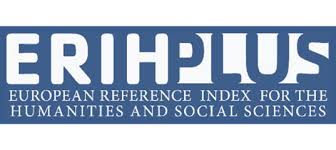The Use of GeoGebra in Teaching Mathematical Concepts: Practices, Barriers, and Teachers' Perceptions
DOI:
https://doi.org/10.17398/1695-288X.24.1.77Keywords:
GeoGebra, Educational Technology, Mathematics Teachers, Mathematical Concepts , Mathematics Curriculum, Secondary EducationAbstract
The use of GeoGebra in teaching mathematics has grown significantly in recent years, so this study aims to explore the use of this software by teachers in teaching the limit of a function. For this purpose, a questionnaire has been designed and validated and has been answered by 129 mathematics teachers. The data have been analyzed both quantitatively and qualitatively with the objective of knowing obstacles to the use of GeoGebra and to the development of own applets, to identify the most outstanding characteristics of the GeoGebra applets for teaching the limit and to determine the moments of the process of teaching-learning in which this tool is used. Thus, a limited use of GeoGebra in teaching the limit and a very low percentage of teachers who develop their own applets has been identified, mainly due to the absence of technological resources and the lack of knowledge. Furthermore, interactivity and the possibility of using various representation systems of the limit are revealed as the characteristics most valued by teachers. Finally, GeoGebra is especially used when showing examples and barely used in the evaluation process.
Downloads
References
Arnal-Bailera, A. y Oller-Marcén, A. M. (2020). Construcciones geométricas en GeoGebra a partir de diferentes sistemas de representación: un estudio con maestros de primaria en formación. Educación Matemática, 32(1), 67-98. https://doi.org/10.24844/EM3201.04
Barreras, A., Dubarbie, L. y Oller-Marcén, A. M. (2022). Análisis de applets de GeoGebra para la enseñanza del límite de una función. Bordón. Revista de Pedagogía, 74(4), 65-83. https://doi.org/10.13042/Bordon.2022.93361
Blaikie, N. (2003). Analyzing quantitative data. SAGE.
Blázquez, S. y Ortega, T. (2001). Los sistemas de representación en la enseñanza del límite. Revista Latinoamericana de Investigación en Matemática Educativa, 4(3), 219-236.
Caligaris, M. G., Schivo, M. E. y Romiti, M. R. (2015). Calculus & GeoGebra, an interesting partnership. Procedia-Social and Behavioral Sciences, 174, 1183-1188. https://doi.org/10.5565/rev/ensciencias.3653
Carvalho, P., Descalço, L. y Gonçalves, H. F. (2023). Using Computer Algebra Systems in Teaching and Assessment in Calculus. En L. Gómez, C. González y J. Lees (Eds.). EDULEARN23 Proceedings (pp. 2041-2048). IATED.
Creswell, J. W. (2012). Educational research. Planning, conducting and evaluating quantitative and qualitative research. Pearson.
Dockendorff, M. y Solar, H. (2016). Formación de profesorado: conceptualización del uso del software GeoGebra en la enseñanza de la matemática en educación media como parte de la didáctica de la disciplina. RECHIEM. Revista Chilena de Educación Matemática, 10(1), 92-99.
Elangovan, N. y Sundaravel, E. (2021). Method of preparing a document for survey instrument validation by experts. MethodsX, 8, 101326. https://doi.org/10.1016/j.mex.2021.101326
Flick, U. (2004). Triangulation in qualitative research. En U. Flick, E. von Kardoff e I. Steinke (Eds.). A companion to qualitative research (pp. 78-183). SAGE.
García, M. M., Romero, I. M. y Gil, F. (2021). Efectos de trabajar con GeoGebra en el aula en la relación afecto-cognición. Enseñanza de las Ciencias, 39(3), 177-198. https://doi.org/10.5565/rev/ensciencias.3653
García-Lázaro, D. y Martín-Nieto, R. (2023). Competencia matemática y digital del futuro docente mediante el uso de GeoGebra. ALTERIDAD. Revista de Educación, 18(1), 85-98. https://doi.org/10.17163/alt.v18n1.2023.07
González Pérez, A. y De Pablos Pons, J. (2015). Factores que dificultan la integración de las TIC en las aulas. Revista de Investigación Educativa, 33(2), 401-417. http://dx.doi.org/10.6018/rie.33.2.198161
Guarin, S. A. y Parada, S. E. (2023). Acciones y expresiones de la comprensión del límite de una función en un punto, por estudiantes de cálculo diferencial. Educación Matemática, 35(1), 197-228. https://doi.org/10.24844/em3501.08
Hernández, R., Fernández C. y Baptista P. (2010). Metodología de la Investigación. Mc Graw Hill.
Hohenwarter, J., Hohenwarter, M. y Lavicza, Z. (2009). Introducing dynamic mathematics software to secondary school teachers: the case of GeoGebra. Journal of Computers in Mathematics and Science Teaching, 28(2), 135-146.
Huang, R. y Li, Y. (2012). What matters most: A comparison of expert and novice teachers' noticing of mathematics classroom events. School science and mathematics, 112(7), 420-432. https://doi.org/10.1111/j.1949-8594.2012.00161.x
Hutkemri, E. Z. (2014). Impact of using GeoGebra on students’ conceptual and procedural knowledge of limit function. Mediterranean Journal of Social Sciences, 5(23), 873-881. https://doi.org/10.5901/mjss.2014.v5n23p873
Iranzo, N. y Fortuny, J. M. (2009). La influencia conjunta del uso de GeoGebra y lápiz y papel en la adquisición de competencias del alumnado. Enseñanza de las Ciencias, 27(3), 433-446. https://doi.org/10.5565/rev/ensciencias.3653
Koehler, M. J., Mishra, P. y Cain, W. (2013). What is Technological Pedagogical Content Knowledge (TPACK)? Journal of Education, 193(3), 13–19. https://doi.org/10.1177/002205741319300303
Lasa, A. y Wilhelmi, M. R. (2013). Use of GeoGebra in explorative, explanatory and demonstrative moments. Revista do Instituto GeoGebra Internacional de Sao Paulo, 2(1), 52-64.
Marange, I. Y. y Tatira, B. (2023). Teaching Euclidean geometry with GeoGebra: Perceptions for in-service mathematics teachers. Eurasia Journal of Mathematics, Science and Technology Education, 19(12), em2367. https://doi.org/10.29333/ejmste/13861
Martinovic, D. y Karadag, Z. (2012). Dynamic and interactive mathematics learning environments: the case of teaching the limit concept. Teaching Mathematics and Its Applications: International Journal of the IMA, 31(1), 41-48. https://doi.org/10.1093/teamat/hrr029
McCulloch, A. W., Hollebrands, K., Lee, H., Harrison, T. y Mutlu, A. (2018). Factors That Influence Secondary Mathematics Teachers' Integration of Technology in Mathematics Lessons. Computers & Education, 123(4), 26-40. https://doi.org/10.1016/j.compedu.2018.04.008
McGrath, J., Karabas, G. y Willis. J. (2011). From TPACK concept to TPACK practice: An analysis of the suitability and usefulness of the concept as a guide in the real world of teacher development. International Journal of Technology in Teaching and Learning, 7(1), 1-23.
Musa, M., Mamat, Y. y Ghazali, M. (2021). Teachers’ Status of GeoGebra Use in The Teaching of Geometric Transformation. Turkish Journal of Computer and Mathematics Education, 12(14), 4326-4332. https://doi.org/10.17762/turcomat.v12i14.11294
NCTM (2000). Principles and standards for school mathematics. National Council of Teachers of Mathematics.
Nurlaily, V. A., Soegiyanto, H. y Usodo, B. (2019). Elementary School Teachers' Obstacles in the Implementation of Problem-Based Learning Model in Mathematics Learning. Journal on Mathematics Education, 10(2), 229-238. https://doi.org/10.22342/jme.10.2.5386.229-238
OECD (2013). ¿Qué se puede hacer para ayudar a los profesores noveles? Teaching in Focus, 2.
Perrin-Glorian, M. J. (1999). A study of teachers’ practice, organization of contents and of the students’s work. En K. Krainer y F. Goffree (Eds.). On research in teacher education. From a study of teaching practices to issues in teacher education (pp. 171-186). Forschungsinstitut für Mathematikdidaktik.
Przenioslo, M. (2004). Images of the limit of function formed in the course of mathematical studies at the university. Educational Studies in Mathematics, 55, 103-132. https://doi.org/10.1023/B:EDUC.0000017667.70982.05
Rodríguez, L., Bravo, J. L., Pérez, A. y Rodríguez, N. (2020). El GeoGebra como recurso didáctico para la comprensión de las formas indeterminadas del límite. Acta Latinoamericana de Matemática Educativa, 33(1), 751-762.
Romero, I. M. y García, M. M. (2023). Mathematical attitudes transformation when introducing GeoGebra in the secondary classroom. Education and Information Technologies, 1-26. https://doi.org/10.1007/s10639-023-12085-w
Romero, I. M., García, M. M. y Codina, A. (2015). Developing mathematical competencies in secondary students by introducing dynamic geometry systems in the classroom. Education and Science, 40(177), 43-58. http://dx.doi.org/10.15390/EB.2015.2640
Rosyidi, A. H., Sari, Y. M., Fardah, D. K. y Masriyah, M. (2024). Designing mathematics problem-solving assessment with GeoGebra Classroom: proving the instrument validity. Journal of Education and Learning (EduLearn), 18(3), 1030-1038. https://doi.org/10.11591/edulearn.v18i3.21191
Saralar-Aras, I. (2022). An exploration of middle school mathematics teachers’ beliefs and goals regarding a dynamic tool in mathematics lessons: Case of GeoGebra. Journal of Research in Science, Mathematics and Technology Education, 5(SI), 41-63. https://doi.org/10.31756/jrsmte.113SI
Sari, P. (2017). GeoGebra as a means for understanding limit concepts. Southeast Asian Mathematics Education Journal, 7(2), 71-84. https://doi.org/10.46517/seamej.v7i2.55
Schmidt, B. (2011). Modelling in the classroom: Obstacles from the teacher’s perspective. En G. Kaiser, W. Blum, R. Borromeo Ferri y G. Stillman (Eds.). Trends in teaching and learning of mathematical modelling: ICTMA14 (pp. 641-651). Springer. https://doi.org/10.1007/978-94-007-0910-2_61
Takaci, D., Stankov, G. y Milanovic, I. (2015). Efficiency of learning environment using GeoGebra when calculus contents are learned in collaborative groups. Computers & Education, 82, 421-431. https://doi.org/10.1016/j.compedu.2014.12.002
Tall, D. (1991). The Psychology of Advanced Mathematical Thinking. En D. Tall (Ed.). Advanced Mathematical Thinking (pp. 3-21). Kluwer. https://doi.org/10.1007/0-306-47203-1_1
Wassie, Y. A. y Zergaw, G. A. (2019). Some of the potential affordances, challenges and limitations of using GeoGebra in mathematics education. Eurasia Journal of Mathematics, Science and Technology Education, 15(8), em1734. https://doi.org/10.29333/ejmste/108436
Zengìn, Y. (2017a). The potential of GeoGebra software for providing mathematical communication in the light of pre-service teachers’ views. Necatibey Faculty of Education Electronic Journal of Science and Mathematics Education, 11(1), 101-127.
Zengìn, Y. (2017b). The effects of GeoGebra software on preservice mathematics teachers’ attitudes and views toward proof and proving. International Journal of Mathematical Education in Science and Technology, 48(7), 1002-1022. https://doi.org/10.1080/0020739X.2017.1298855
Downloads
Published
Versions
- 2025-01-02 (2)
- 2025-01-02 (1)
Issue
Section
License
Copyright (c) 2025 Luis Dubarbie-Fernández, Álvaro Barreras, Antonio M. Oller-Marcén

This work is licensed under a Creative Commons Attribution-NonCommercial-NoDerivatives 4.0 International License.
Authors who publish in this journal accept the following conditions:
1. The Author retains copyright in the article. Upon acceptance of the article, the author shall grant to the Publisher the right of first publication of the article. with the dcoument registered with the Creative Commons Attribution-NonCommercial-NoDerivative 4.0 International (CC BY-NC-ND) license, which allows to third parties to use what is published whenever they mention the authorship of the work and the first publication in this journal.
2. Authors can make other independent and additional contractual agreements for the non-exclusive distribution of the article published in this journal (eg, include it in an institutional repository or publish it in a book) provided they clearly indicate that the work was published for the first time in this journal.
3. Authors are allowed and recommended to publish their work on the Internet (for example on institutional or personal pages) before and during the review and publication process, as it can lead to productive exchanges and a greater and faster diffusion of published work (see The Effect of Open Access).

